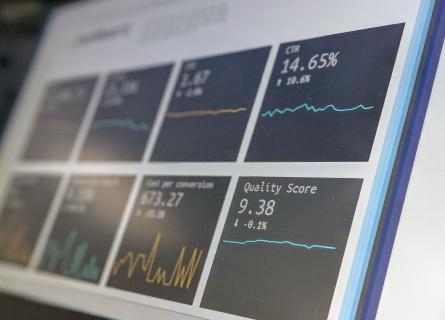Not all SEO audits are the same, they range from a basic free SEO website checker to a full SEO audit service where a professional SEO auditor analyses your website and provides you with a suite of SEO reports.
We provide both these extremes because we understand people want a quick look at their SEO before engaging with an SEO company for a more comprehensive approach.
What is an SEO audit?
An SEO audit is where we use our digital tools to look ‘under the bonnet’ of your website at your on-site SEO, your internal linking, crawlability, URL parameters, server connectivity, response codes and report back to you on issues, remedial action and costs to get you race-ready. Our SEO auditors see what Google sees and can then use this information to recommend how to fix the unseen problems and make your site more visible in Google. Think of it as a report which will provide the basis for an action plan.


Why SEO audit is important
Even if your site is brand new, it still needs auditing to check it has everything in place to be visible. In fact, we would recommend an SEO audit every three to six months as things can change very quickly in this game, Google just needs to tweak their algorithm and suddenly your website is not ranking as highly. Or a competitor gets smart with SEO and pushes you down below them in the organic rankings.
What will an SEO audit tell me?
We check and report on the following
Header tags
These are your titles and sub titles for the page and Google uses these to understand the content on the page, in particular, what’s important. Sometimes the header tags are missing or misleading or don’t represent one of your main keywords. Your SEO audit will evaluate your H-tags for relevancy so they can be modified as required.
Meta titles
The meta titles help Google to understand page content and match user searches with content from your site, so they need to be unique and descriptive. Your site audit will give you a full breakdown of the pages which need addressing. You have about ten words to help Google understand what is on the page, so you must include your main keyword for the page. Having done your keyword research, your meta titles may need adjusting to ensure they are optimised.
Meta descriptions
Your chance to entice your customer to click on your snippet in the SERPs, so a careful hand crafted description is what we need here. You have 40-50 words to reflect back their search intention and reassure them you have the answer on your website.
301 redirects
A 301 redirect is how we tell Google which pages are superseded by new ones. We’ll list your errors and broken links and help you decide which redirects to apply. Errors can be served for a number of reasons, but most commonly because a URL that Google has indexed is no longer the right URL for that page, so you need to redirect traffic to the right place.
Canonical tags
A canonical tag is used when multiple URLs serve the same content. You need to apply a canonical tag to tell search engines which one of these pages you want them to index and serve in SERPs.
Keyword rankings
Which keywords are you ranking for and how much organic traffic are you currently getting? This will lead into the keyword search and competitor analysis phase, where you learn exactly who is taking your organic traffic and how you can claim it back.
Internal links
You need 2-10 internal links per page, with a good spread across all pages. For pages you want to rank for, you need more links, including a link from the home page.
Backlinks
How many other trusted sites link to you? These are important because Google regards them as ‘recommendations’ that your site has interesting content. And the more ‘domain authority’ the referring sites have, the more attention Google will pay to that backlink. Not all backlinks are helpful, some need to be disavowed as they are not genuine or come from a source which is not trusted, so they will harm your reputation. Your site audit will give you a list of the backlinks which need to be disavowed as well as a count of the trusted links.
Domain authority
This is a number between 1 and 100 which indicates how much public interest your site has. For example, www.bbc.co.uk has an authority of 90 whereas most blogging site have an authority of between 10 and 35. The higher your authority, the higher you will rank. You grow in domain authority by paying attention to SEO and high quality content.
Page speed
People are getting so impatient and if your pages take more than 2 seconds to load you could be losing 10% of your traffic before they have even seen your proposition. If it takes more than 5 seconds to load, the bounce rate rises to 60%.
Images
We’ll report on image filenames and alt tags to let you know which ones need modifying. Google wants to ensure the user experience is good for everyone, and by making some minor tweaks to image filenames and alt tags, it enables visually impaired people to better understand your proposition.
Website design
Is your user experience a good one? Is your site navigation clear? Can users tell the difference between site content and banner ads? Is your 404 error page friendly and does it allow easy navigation to other pages? Restructuring your site to improve navigation, making it easier for people (and Google) to find the information they are looking for. You might have a few different types of people using the site, trying to find different information, and by restructuring the site slightly, it can greatly enhance user experience.
Site map
How many pages are being indexed (seen) by Google versus how many are in your site map. Sometimes pages you don’t want Google to be seen are still being indexed and sometimes Google can’t see all the pages you thought it could. This is essential information to ensure you and Google are on the same page.
Website content
Your content writing needs to be of high quality: the right length, grammatically correct and not duplicated. Sometimes it’s necessary to have similar pages, to explain your proposition to your customers in different ways. But if you have too much duplication, Google assumes your site is confusing to customers and may issue a rank penalty whereby all your Google search results are shifted down a page.
Robots.txt
This is where you instruct web bots which pages to crawl and which to ignore. It’s vital this is in the right place and correct so search engines index everything you want them to and don’t crawl pages like your test site or duplicate content.
Help!
We can help with all these things, ensuring changes are implemented effectively.